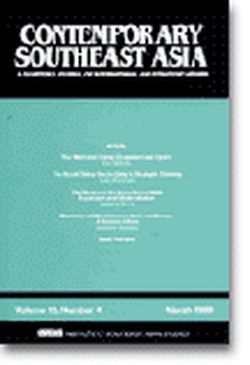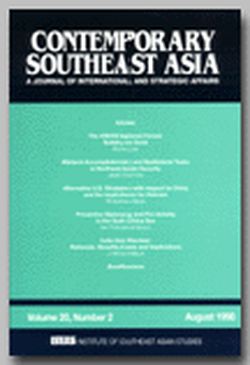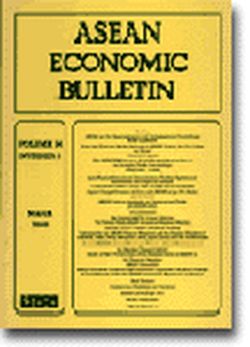Contemporary Southeast Asia: A Journal of International and Strategic Affairs Vol. 19/4 (Mar 1998)

Date of publication:
March 1998
Number of pages:
73
Code:
CS19/4
Contents
-
Preliminary Pages
-
The West and China: Crusaders and Cynics, by Kay Moller, contributor see abstractThe recent convergence between the European Unionâs and the United Statesâ strategies vis-Ã -vis China has been superficial. Even if Washingtonâs policies have turned more âcommercialâ, the U.S. interest remains characterized by considerations of global and regional order. Europeâs recently âpoliticizedâ approach, on the other hand, hardly conceals a largely economic agenda. The Clinton administrationâs âcomprehensive engagementâ of Beijing may be an adequate tactic to gain time for learning processes in China. Its dilemma consists in the low speed of such learning and the temptation for third parties (such as the European Union) to allow themselves to be played against the United States if the short-term calculus makes this appear to be a profitable option.
-
The South China Sea in China's Strategic Thinking, by Shee Poon Kim, contributor see abstractThis article examines Chinaâs strategic thinking and policy towards the South China Sea in the post-Cold War era. One of its objectives is to show the linkage between Chinaâs âstrategic thinkingâ and its âstrategic behaviourâ. One cannot understand Chinaâs strategic behaviour and policy without analysing the strategic thinking and thoughts of Chinaâs decision-makers, especially Deng Xiao-pingâs eight strategic principles which have provided the foundation for Jiang Zeminâs policy towards the South China Sea since the post-Cold War era. The article also throws some light on the understanding of Chinaâs changing perception towards the sea and its preparations to face the challenges from possible maritime conflicts in the twenty-first century.
-
The Myanmar Air Force Since 1988: Expansion and Modernization, by Andrew Selth, contributor see abstractBefore the creation of the State Law and Order Restoration Council (SLORC) in 1988, the Burma Air Force was small, ill-equipped and crippled by its dependence on foreign logistics. It was hard-pressed to keep its aircraft flying, and could only perform a limited role in support of the armyâs counter-insurgency operations. Yet, the air force has always been, and remains, an important factor in Myanmarâs security. The dramatic growth of the (renamed) Myanmar Air Force (MAF) under the SLORC suggests that the new generation of military leaders in Yangon shares this view. In addition to strengthening the MAFâs internal security role, the SLORC (and now its successor, the State Peace and Development Council) seems to envisage a significant external defence role for this element of the armed forces. If this ambitious modernization programme is successful, then in a few years time Myanmar will have a credible air defence capability for the first time in its history.
-
Memories of War Crimes in Asia and Europe: A Review Article
- BOOK REVIEWS
-
BOOK REVIEW: Interpreting Democracy. Capitalism, Democracy, and the Middle Class in Thailand, by John Girling, by John Funston, contributor
-
BOOK REVIEW: Sihanouk: Prince of Light, Prince of Darkness, by Milton Osborne, by Sorpong Peou, contributor
-
Index






